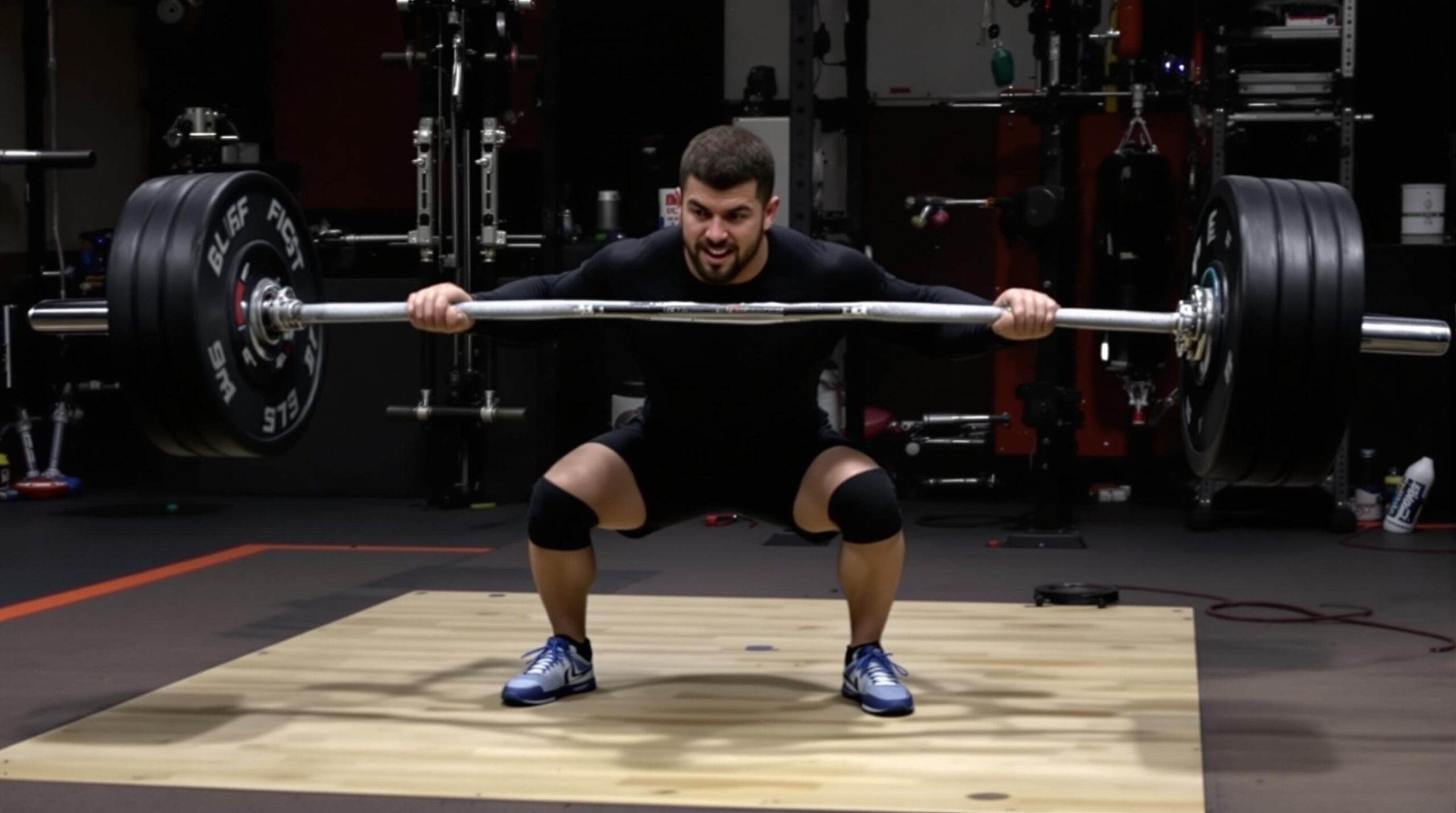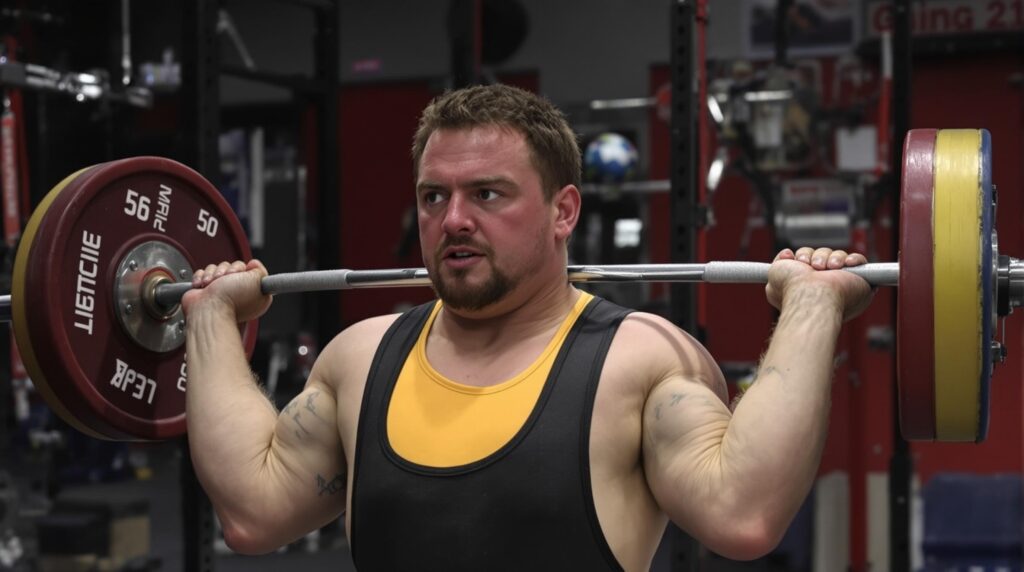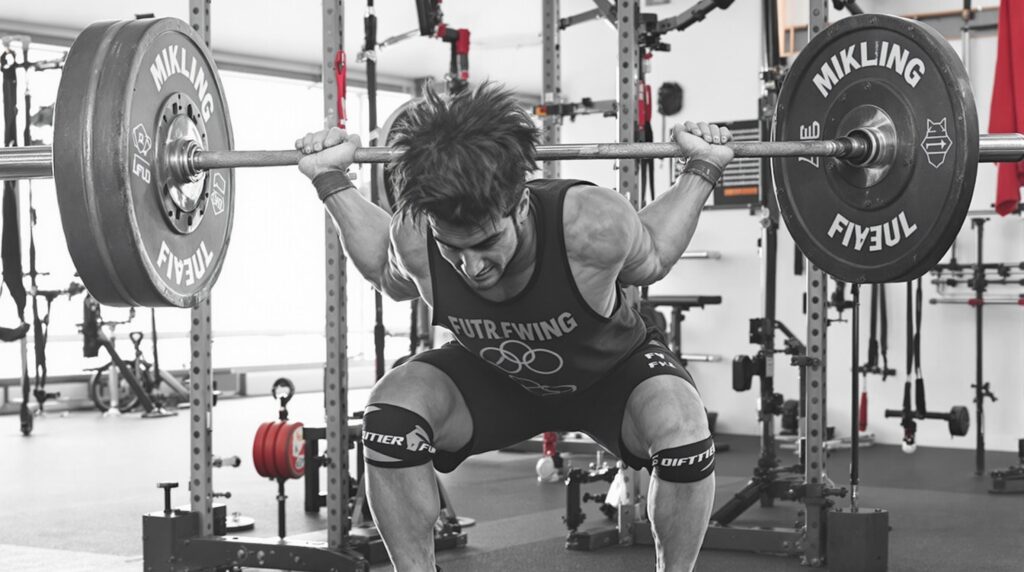The debate between power lifts vs Olympic lifts continues to captivate strength athletes and coaches seeking optimal training methods in 2025. Both disciplines offer distinct pathways to strength development, with powerlifting focusing on maximal strength through squats, bench presses, and deadlifts, while Olympic weightlifting emphasizes explosive power through the snatch and clean and jerk.
Key Takeaways
- Olympic lifting generates up to 4 times higher power outputs than powerlifting movements, making it superior for explosive athletics
- Powerlifting creates 30% higher peak forces and is more accessible for beginners with a 4-8 week learning curve versus 3-6 months for Olympic lifts
- Hybrid training programs combining both disciplines show 10-15% greater improvements in vertical jump and strength gains
- Olympic lifters develop larger quadriceps and trapezius muscles, while powerlifters build more substantial chest and tricep development
- Each discipline has unique injury risk profiles with powerlifting affecting lumbar spine and Olympic lifting impacting wrists and knees
Technical Demands: Olympic Complexity vs Powerlifting Accessibility
The learning curve represents one of the most significant differences between these disciplines. Olympic weightlifting movements demand explosive triple extension (simultaneously extending ankles, knees, and hips), exceptional overhead mobility, and precise timing. For most athletes, achieving technical proficiency requires 3-6 months of dedicated practice.
In contrast, powerlifting emphasizes maximal force production through slower, more controlled movements. The squat, bench press, and deadlift involve simpler mechanics that most athletes can master within 4-8 weeks. This accessibility makes powerlifting an attractive starting point for many beginners.
The biomechanical differences are substantial. Olympic lifters demonstrate 15-20% greater hip and shoulder mobility than their powerlifting counterparts. However, powerlifters generate approximately 30% higher peak forces during deadlifts (6,400 N·s⁻¹) compared to Olympic lifters performing cleans (5,000 N·s⁻¹).

Raw Strength vs Explosive Power: Different Force Production Paradigms
Powerlifting optimizes absolute strength development, exemplified by elite performers like Hafþór Júlíus Björnsson’s world record 501kg deadlift. The methodical, grinding nature of these lifts maximizes total force output through slower, controlled movements.
Olympic lifting, by comparison, prioritizes the rate of force development (RFD). During the second pull of a snatch, an athlete can generate up to 3,634 watts of power—nearly 12 times more than the 300 watts produced during a bench press by a 100kg male. This explosive power translates directly to athletic performance, with Olympic lifters demonstrating powerful athletic advantages including 15-20% higher vertical jumps and faster sprint times.
The data clearly shows distinct adaptations: powerlifters develop 12-18% greater one-rep max in squats, while Olympic lifters achieve significantly higher velocity movements. This difference explains why sports requiring explosive power often incorporate Olympic lifting derivatives in their training programs.
Muscle Development: Hypertrophy Mechanisms and Fiber Recruitment
Both disciplines build impressive musculature, but through different physiological pathways. Powerlifting induces hypertrophy primarily through time-under-tension mechanisms, with studies showing a 20-25% increase in type IIx muscle fiber cross-sectional area over 12 weeks of training.
Olympic lifting recruits type IIa fibers for explosive contractions, enhancing muscle power density by 8-12%. The muscular development patterns reflect the demands of each sport: powerlifters display 10-15% larger pectoralis major muscles, while Olympic lifters develop 12-18% larger quadriceps and trapezius muscles.
This difference in fiber recruitment has practical implications. Olympic lifters show 30% greater type IIa fiber dominance in the vastus lateralis compared to powerlifters. These fibers excel at generating force quickly—perfect for explosive movements but less optimal for sustained maximal contractions.
Injury Considerations and Long-Term Joint Health
Safety remains a critical factor in choosing between these disciplines. Powerlifting carries a 25-30% higher overall injury risk compared to Olympic lifting, with the lumbar spine accounting for 40% of injuries and shoulders representing another 22%. These injuries typically stem from the extreme loads used in competition and training.
Olympic lifting’s 15-20% injury incidence primarily affects the wrists (18%) and knees (12%), often resulting from technical errors during catch phases. The depth requirements in powerlifting squats correlate with 20% higher patellofemoral stress compared to the high-bar squat positions favored in Olympic lifting.
Interestingly, Olympic lifters exhibit 25% greater bone mineral density in the spine and hips due to the dynamic loading patterns of their sport. This adaptation suggests potential long-term protective effects against osteoporosis—a significant consideration for lifters concerned with health beyond performance.
Sport Performance Applications: Translating Barbell Strength to Athletic Ability
For athletes seeking performance enhancement, the transfer of training effects becomes crucial. Olympic lifting consistently demonstrates superior carryover to explosive sports, enhancing vertical jump by 8-12% and improving sprint acceleration by 0.5-0.8 seconds in 40-meter times.
Powerlifting offers greater benefits for sports requiring static strength and pushing power. Research shows squat strength correlating to 35% of blocking efficacy in football linemen, making it valuable for collision-based sports.
Recent competition data highlights these differences. At the 2025 European Weightlifting Championships, 82.5kg lifters snatched 181kg and clean-and-jerked 218kg—demonstrating remarkable power-to-weight ratios. Meanwhile, powerlifters at the 2025 Arnold Classic averaged 350kg squats but displayed 15-20% lower broad jump distances compared to Olympic lifters of similar weight classes.
Modern Training Integration: The Power of Hybrid Approaches
Modern strength coaches increasingly recognize that the optimal approach combines elements from both disciplines. Hybrid training protocols integrating powerlifts and Olympic lifts have shown impressive results, increasing vertical jump by 10-15% and 1RM squat by 8-12% over 12-week training cycles.
A sample program might include:
- Day 1: Power snatch (4×3 @ 70% 1RM), back squat (5×5 @ 80% 1RM)
- Day 2: Bench press (5×5), clean pulls (3×5)
- Day 3: Front squat (4×4), push press (4×6)
- Day 4: Deadlift (3×5), power clean (5×2)
Technology now enhances this integration. Velocity-based training devices track barbell speed, ensuring Olympic lifts remain above 0.8 meters per second for optimal power development. Similarly, eccentric overload equipment enables 120% 1RM eccentric bench presses, bridging powerlifting and Olympic lifting adaptations.
Many elite athletes have embraced this hybrid approach, with CrossFit champions particularly demonstrating the effectiveness of combining both disciplines in their training regimens.
Making the Right Choice for Your Goals in 2025
When choosing between power lifts and Olympic lifts, your decision should align with your specific goals. For maximal raw strength development, powerlifting’s controlled heavy loads remain unmatched. The bench press, squat, and deadlift create the highest absolute force production and build tremendous overall strength.
If your aims include power, explosiveness, and athletic transfer, Olympic lifting offers superior benefits. The snatch and clean and jerk develop unparalleled rate-of-force production that directly translates to jumping, sprinting, and change-of-direction abilities.
Most recreational athletes and fitness enthusiasts will benefit from hybrid approaches combining elements from both disciplines. Your individual factors matter too—technical aptitude, mobility limitations, sport-specific needs, and injury history should all influence program design.
The most successful strength athletes, like world record holders, often incorporate principles from both disciplines while specializing in their competition movements. This balanced approach maximizes strength gains while minimizing the limitations of either discipline alone.
Sources
Strength Ambassadors – Powerlifting vs Olympic Lifting
Breaking Muscle – The Scientific Differences Between Weightlifting and Powerlifting
Athletic Lab – Power Outputs Olympic Weightlifting vs Powerlifting by Jesse Wang
Elemental Fitness – The 5 Best Compound Lifts for Strength and Muscle Growth
Science For Sport – Olympic Weightlifting
Weightlifting House – European Weightlifting Championships Results
Elite FTS – A Debate Between Powerlifting and Olympic Lifting as the Main Athletic Training Method



